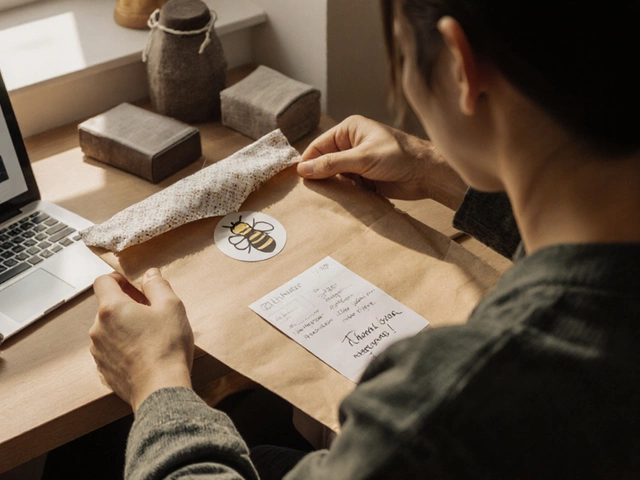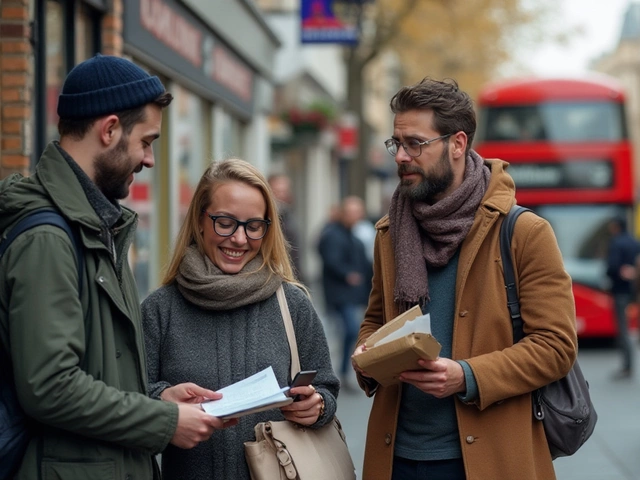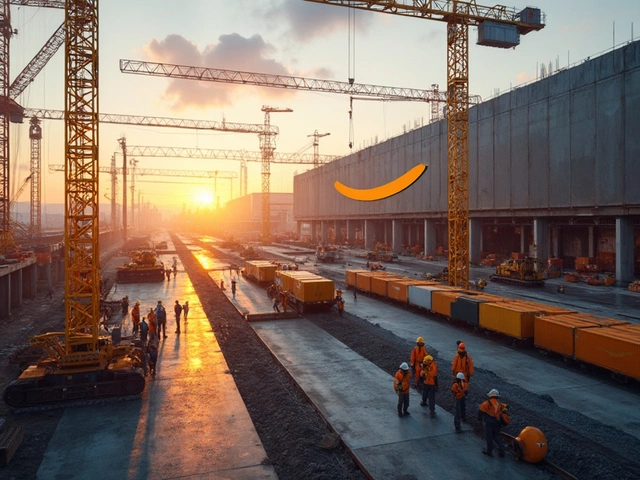Ever wondered how that online order magically arrives at your doorstep so quickly? It's all thanks to the concept of last mile delivery as a service. But what does that really mean? At its core, it's about the final leg of the journey your package takes from a hub to your home. This step might seem straightforward, but it's packed with challenges, especially in dense cityscapes or sprawling suburbs.
Companies handling last mile delivery often partner with local couriers or use tech-driven solutions to make sure your package doesn’t go on a wild goose chase across town. This service is crucial in today’s e-commerce world, where customers expect fast and reliable deliveries.
Curious about what's making this possible? Innovations like route optimization software, GPS tracking, and even drone deliveries are reshaping how goods reach us. Businesses that nail last mile delivery end up winning over more customers, as no one likes waiting around for a late package.
So, how do these dynamics affect you, the everyday shopper? By understanding the value and the intricate operations behind last mile delivery, you can appreciate the hard work ensuring your packages arrive just when you need them.
- Understanding Last Mile Delivery
- Key Players in the Service
- Technological Innovations
- Impact on Businesses and Consumers
Understanding Last Mile Delivery
The term last mile delivery refers to the very last stretch of the delivery journey. It's the crucial handoff that gets a package from the local warehouse or transit hub right to your doorstep. This part of the delivery process is often the trickiest and most expensive. Businesses know that nailing this step can seriously affect customer satisfaction and loyalty, especially these days when everyone's used to next-day or even same-day delivery.
Think about urban areas, with their heavy traffic and tight parking spots, or sprawling rural areas where a single delivery might mean miles of driving just for one package. These challenges make last mile delivery a significant puzzle for logistics companies. They have to figure out how to keep costs down while ensuring packages arrive on time.
So who are the major players involved? It's often a mix of traditional delivery companies and newer, tech-savvy startups. Big names like DHL and UPS are involved, but there's also a new wave of local couriers using apps to bring a tech edge. They're leveraging everything from crowdsourced drivers to smart algorithms that find the quickest, most efficient routes.
Delivery companies often use smart tech solutions to streamline this journey. Route optimization software helps plot out the quickest delivery path, saving time and fuel costs. GPS tracking gives customers real-time updates, so they know exactly when to expect their package.
Seems pretty high-tech, right? Sometimes, companies even employ alternative delivery methods like bicycles in congested city areas or electric vans for environmentally conscious deliveries. These tactics help tackle logistical woes while keeping the planet in mind.
Overall, mastering the last mile delivery scene is about balancing speed, cost, and customer satisfaction. It's a constantly evolving field as tech advances and consumer demands shift.
Key Players in the Service
When talking about last mile delivery as a service, there are several big names and innovative newcomers shaping this industry. Whether it's established giants or tech-savvy startups, everyone's racing to offer faster, more reliable delivery options.
Let's start with the major players like Amazon and UPS. They've seriously invested in their own logistics networks to have enough muscle and reach to handle last mile delivery effectively. Amazon's even using its own fleet of drivers in what's known as Amazon Flex. So, they basically act like a delivery Uber for packages.
Then you've got logistics companies like FedEx, working not just on their own deliveries but also partnering with e-commerce businesses to streamline the delivery process. They use data-driven strategies to optimize routes and reduce delivery times.
But it’s not just the big ones making waves. Startups like Postmates and DoorDash began by delivering food but have since expanded to handling packages. They offer flexibility and tech-driven solutions that make them agile in urban settings.
Technology companies are also key players. Firms like Route4Me and Onfleet provide software that helps optimize delivery paths, cut down driving distances, and boost efficiency. This kind of tech is critical, especially in city areas where traffic can be a nightmare.
- Amazon Flex: A gig-economy model for package delivery, using independent contractors.
- FedEx: Known for integrating high-tech solutions into their massive delivery network.
- Postmates and DoorDash: Versatile players moving from food delivery to packages.
- Route4Me and Onfleet: Companies offering software to optimize delivery logistics.
Why does this matter for you? The competition among these players usually translates to better services and faster deliveries. As they battle it out, the focus remains on enhancing the delivery experience for folks like us waiting at home.

Technological Innovations
So, how is technology jazzing up the whole last mile delivery scene? It’s crazy, really, how far things have come. First up, we have route optimization. This is like GPS on steroids. It analyzes traffic conditions, delivery windows, and even weather to plot out the most efficient path for deliveries. With this tech, drivers can save time and fuel, cutting down costs and keeping deliveries prompt.
Then, there’s the fun bit: drones and robots. These futuristic delivery methods are slowly becoming a reality, especially in urban areas. When roads are jammed, flying over traffic or scooting around on sidewalks can make a world of difference. Companies like Amazon and a few food delivery services have dabbled in using drones and it’s been quite a spectacle.
But wait, we’re not just stopping at fancy flying gadgets. Real-time tracking systems are pivotal too. Ever stressed about when your package will arrive? tracking tech keeps you in the loop, alerting you with updates and expected delivery times. This isn't just a nice-to-have; it reduces the number of missed deliveries, which is a win-win for everyone involved.
Oh, and let’s not forget the ‘crowdsourcing’ of delivery. Apps that connect freelance couriers with nearby delivery tasks mean more people are involved in getting your goods to you faster. It’s like Uber, but for packages.
| Technology | Description |
|---|---|
| Route Optimization | Finds the fastest delivery routes based on real-time data. |
| Drones and Robots | High-tech gadgets for fast and direct deliveries. |
| Real-Time Tracking | Keeps customers updated on their package’s journey. |
| Crowdsourced Delivery | Uses local couriers to speed up delivery times. |
Incorporating these technological advancements into last mile delivery provides quicker and more reliable services. It's a continual game-changer for logistics and transportation. With technology advancing at lightning speed, who knows what delivery innovations we’ll see next?
Impact on Businesses and Consumers
So, how does last mile delivery shake things up for businesses and consumers? Well, it’s pretty huge. Let's break it down. For businesses, especially ones selling online, getting this part right can be the difference between happy repeat customers and frustrated one-timers. They win big if they can make deliveries fast and hassle-free. This sometimes means using smart tech or even rethinking logistics entirely to cut costs and boost efficiency.
For consumers, it's like a dream come true. Who doesn’t love getting their stuff on time, every time? Quick and reliable delivery service changes how people shop. It feeds this 'want it now' culture where people expect purchases almost instantly. Plus, with more transparency and tracking options now, customers are pretty much spoiled with info about their package’s journey.
On the flip side, if a delivery is late or goes missing, it can hurt a company’s reputation hard. Bad reviews fly fast online, and in this competitive market, that’s something businesses can’t afford.
Interestingly, there's been a noticeable consumer shift favoring companies that shout about eco-friendly practices. As a result, many in the logistics game are experimenting with green delivery options like bikes or electric vehicles. It’s practical and good for the planet, which is an added bonus.
Plus, check this out for some data fun:
| Aspect | Benefit |
|---|---|
| On-time Deliveries | Boosts customer satisfaction by 85% |
| Tech Integration | Reduces delivery costs by 20% on average |
See how the right moves in the last mile can set a business apart? It builds loyalty, enhances the consumer experience, and meets modern demands efficiently. From a consumer’s perspective, it’s all about convenience and trust. That’s why companies are doubling down on stepping up their last mile game.





